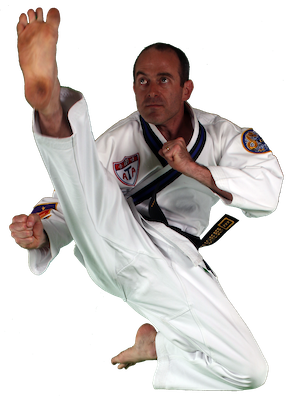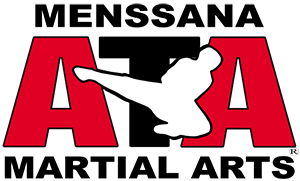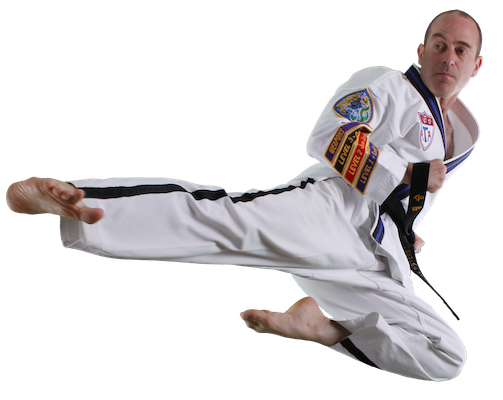
Vision
When Eternal Grand Master Haeng Ung Lee arrived on US soil in 1962, he famously drew a circle on a napkin. "This is America," he told Grand Master Richard Reed. Then he placed dots throughout the interior of the circle. "And here is where we will have Taekwondo schools," he vowed.
In 1983, I visited ATA Headquarters in Little Rock, Arkansas, for the first time. I saw an enormous map of the United States mounted on the wall of Eternal Grand Master's office. Pins peppered the map, representing ATA schools and clubs nationwide—the realization of the vision sketched on a napkin over 20 years earlier.
The same year, Eternal Grand Master introduced Songahm Il-jahng. His vision now included a roadmap, a clear incremental path from white belt to black belt and beyond. And the scope of his vision grew beyond the United States, eventually encompassing the world. To this day, we honor this ambitious vision when we perform Songahm Il-jahng in all four directions.
Throughout my martial arts career, I have worked to fulfill this vision. When I left New Mexico for college, I opened an ATA club in Massachusetts. As a student in England, I opened a WTTU club in England. Then I returned to the US and opened a school in Connecticut. After law school, I spent nearly 20 years running a school in California. And now, I have returned to England with the goal of helping to spread Songahm Taekwondo throughout Europe. I was moved and honored recently when Presiding Grand Master Nominee MK Lee told me that he saw my new role as the fulfillment of Eternal Grand Master's vision.
I have always taught my students that vision has two parts: The ability to visualize your ultimate destination, and a clear sense of how you will get there. A goal without a plan is only a fantasy. A good leader can articulate both the destination and the steps necessary to reach it. That is what Eternal Grand Master did when he developed Songahm Taekwondo. As master instructors, our challenge is to do the same for our students.
Respect
In ATA classes we teach our students to show respect by "treating others how you want to be treated." We also teach that respect is not reserved for those who are higher ranks or older or more powerful than us. When we recite the Songahm Spirit of Taekwondo, we promise to show "respect for our juniors and seniors." This is significant: We owe respect not only to those above us but also to those with less power, privilege, rank or experience than us. We are obligated to treat them as we would like to be treated, even if they lack our status.
Respect, then, goes hand in hand with humility. Rather than elevating ourselves above our students and demanding that they exalt us, we embrace the law of reciprocity: we earn their respect by first giving them ours. Grand Master Michael Caruso demonstrates this conception of respect whenever he ends his seminars by thanking the participants for giving him the opportunity to teach them.
Showing respect for our juniors imparts an essential lesson to them: That they are, indeed, worthy of respect. Once they internalize that truth, they learn to respect themselves. And once this self-respect manifests itself in their conduct—their hygiene, their dress, their bearing, their eye contact, their voice—they easily earn the respect of others.
The obligation to respect our juniors extends beyond interpersonal relationships. It means that we give all students an opportunity to excel, to achieve personal victories—which is why the ATA has always been a leader in teaching students with special abilities and providing tournament options for them. It also means that we use our privilege and status to benefit those who lack either. This impulse was the spark for the ATA's fundraising for the Muscular Dystrophy Association several decades ago, and for so many charitable efforts since then. It also inspired me to found Team PRIDE, a non-profit organization dedicated to extending the benefits of Songahm Taekwondo to those who most need them and who have the least ability to access them.


